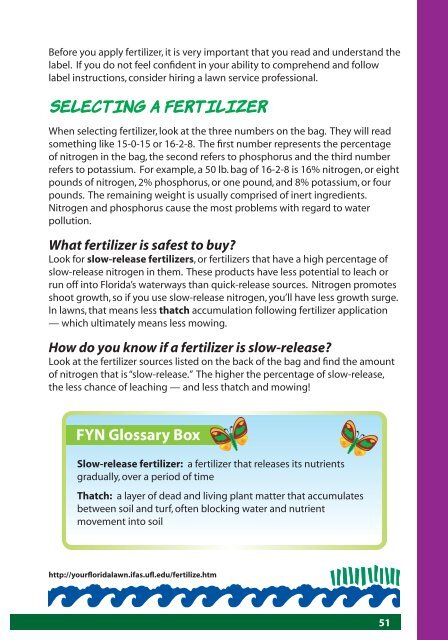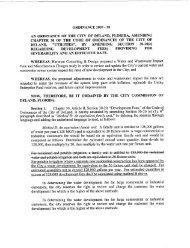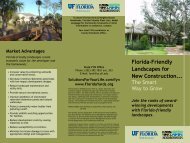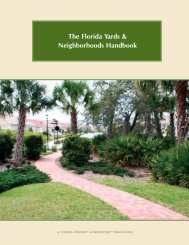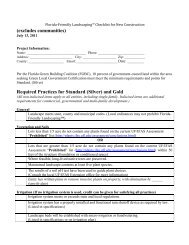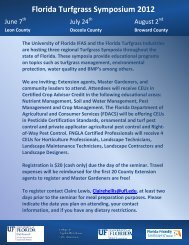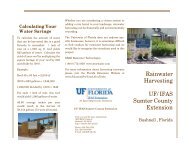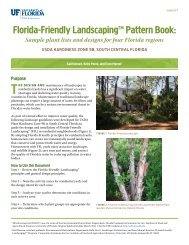A Guide to Florida-Friendly Landscaping A Guide to Florida-Fr ...
A Guide to Florida-Friendly Landscaping A Guide to Florida-Fr ...
A Guide to Florida-Friendly Landscaping A Guide to Florida-Fr ...
Create successful ePaper yourself
Turn your PDF publications into a flip-book with our unique Google optimized e-Paper software.
Before you apply fertilizer, it is very important that you read and understand the<br />
label. If you do not feel confident in your ability <strong>to</strong> comprehend and follow<br />
label instructions, consider hiring a lawn service professional.<br />
Selecting a Fertilizer<br />
When selecting fertilizer, look at the three numbers on the bag. They will read<br />
something like 15-0-15 or 16-2-8. The first number represents the percentage<br />
of nitrogen in the bag, the second refers <strong>to</strong> phosphorus and the third number<br />
refers <strong>to</strong> potassium. For example, a 50 lb. bag of 16-2-8 is 16% nitrogen, or eight<br />
pounds of nitrogen, 2% phosphorus, or one pound, and 8% potassium, or four<br />
pounds. The remaining weight is usually comprised of inert ingredients.<br />
Nitrogen and phosphorus cause the most problems with regard <strong>to</strong> water<br />
pollution.<br />
What fertilizer is safest <strong>to</strong> buy?<br />
Look for slow-release fertilizers, or fertilizers that have a high percentage of<br />
slow-release nitrogen in them. These products have less potential <strong>to</strong> leach or<br />
run off in<strong>to</strong> <strong>Florida</strong>’s waterways than quick-release sources. Nitrogen promotes<br />
shoot growth, so if you use slow-release nitrogen, you’ll have less growth surge.<br />
In lawns, that means less thatch accumulation following fertilizer application<br />
— which ultimately means less mowing.<br />
How do you know if a fertilizer is slow-release?<br />
Look at the fertilizer sources listed on the back of the bag and find the amount<br />
of nitrogen that is “slow-release.” The higher the percentage of slow-release,<br />
the less chance of leaching — and less thatch and mowing!<br />
FYN Glossary Box<br />
Slow-release fertilizer: a fertilizer that releases its nutrients<br />
gradually, over a period of time<br />
Thatch: a layer of dead and living plant matter that accumulates<br />
between soil and turf, often blocking water and nutrient<br />
movement in<strong>to</strong> soil<br />
http://yourfloridalawn.ifas.ufl.edu/fertilize.htm<br />
51


